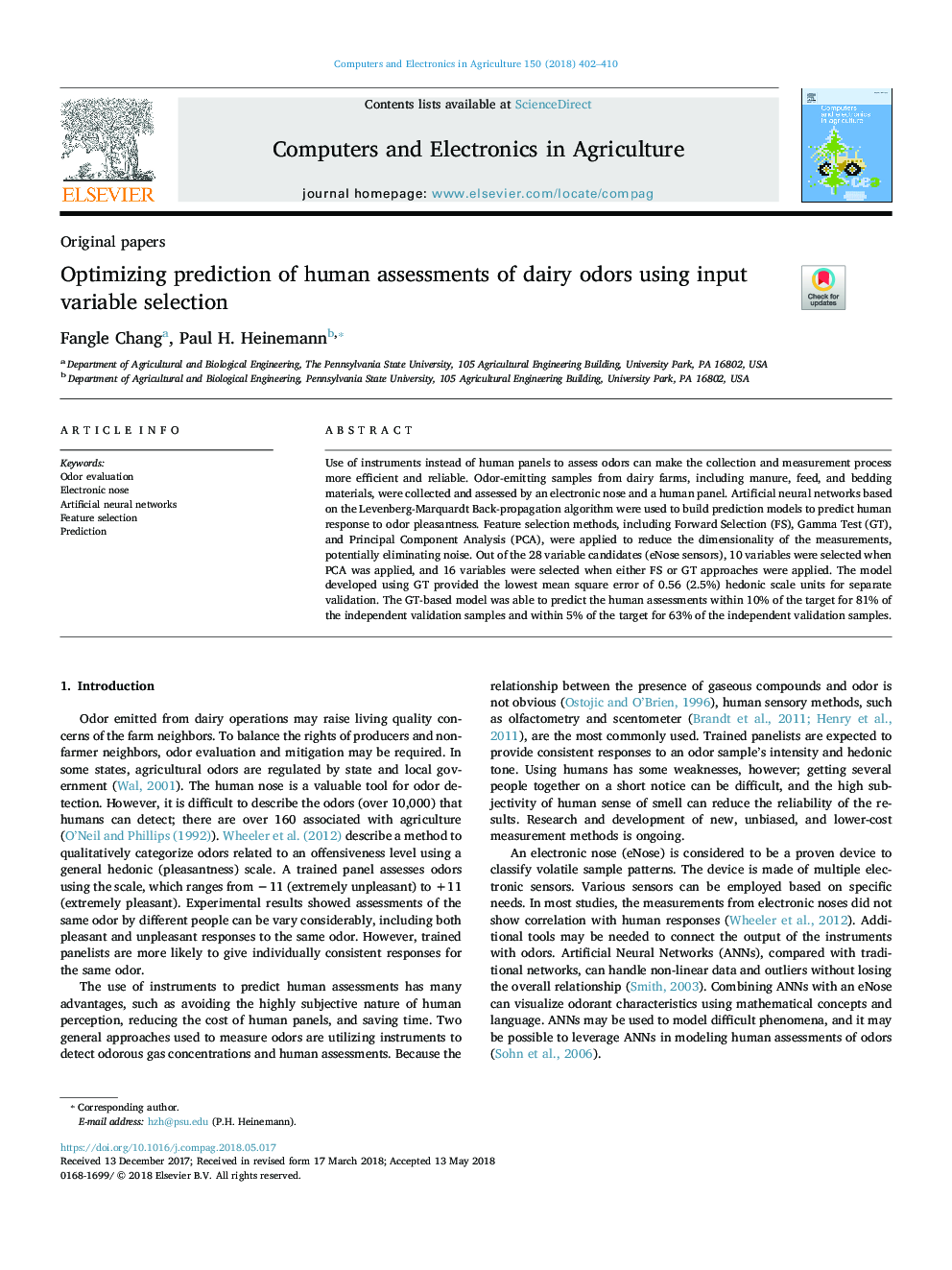| Article ID | Journal | Published Year | Pages | File Type |
|---|---|---|---|---|
| 6539419 | Computers and Electronics in Agriculture | 2018 | 9 Pages |
Abstract
Use of instruments instead of human panels to assess odors can make the collection and measurement process more efficient and reliable. Odor-emitting samples from dairy farms, including manure, feed, and bedding materials, were collected and assessed by an electronic nose and a human panel. Artificial neural networks based on the Levenberg-Marquardt Back-propagation algorithm were used to build prediction models to predict human response to odor pleasantness. Feature selection methods, including Forward Selection (FS), Gamma Test (GT), and Principal Component Analysis (PCA), were applied to reduce the dimensionality of the measurements, potentially eliminating noise. Out of the 28 variable candidates (eNose sensors), 10 variables were selected when PCA was applied, and 16 variables were selected when either FS or GT approaches were applied. The model developed using GT provided the lowest mean square error of 0.56 (2.5%) hedonic scale units for separate validation. The GT-based model was able to predict the human assessments within 10% of the target for 81% of the independent validation samples and within 5% of the target for 63% of the independent validation samples.
Related Topics
Physical Sciences and Engineering
Computer Science
Computer Science Applications
Authors
Fangle Chang, Paul H. Heinemann,
